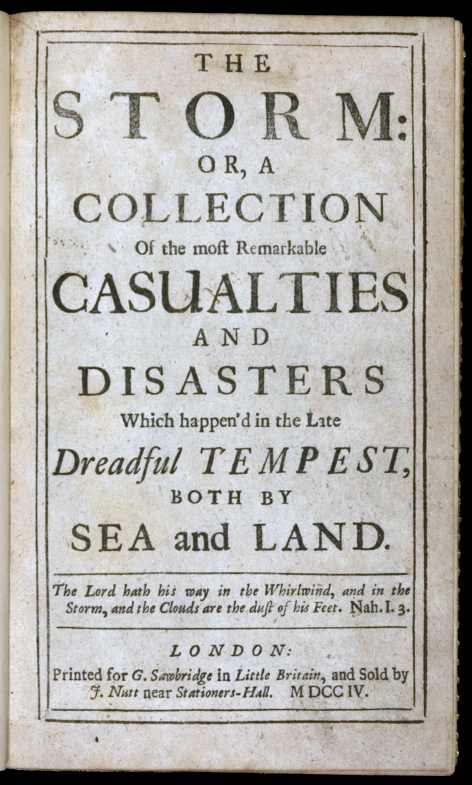The Storm or, a Collection of the most remarkable Casualties and Disasters which happen’d in the Late Dreadful Tempest, both by Sea and Land (1704) is an account by the English author Daniel Defoe of the great storm of 1703 that hit southern England on 26 November,[a]7 December 1703 in the Gregorian calendar in use today. causing extensive and massive destruction.[1] It has been estimated that by the following morning between 8,000 and 15,000 people had been killed, many of them on ships sunk at sea;[2] the Royal Navy alone lost one-fifth of its personnel.[3]
Daniel Defoe travelled the countryside in the aftermath of what remains the worst storm ever to hit the British Isles assessing the damage, and his account, published as The Storm in 1704, is considered to be a landmark in the history of print journalism.[1] Although written as a first-person narrative, it is based on first-hand accounts of the events solicited from all over the country. Defoe placed advertisements in the London Gazette and The Daily CourantFirst British daily newspaper, first published on 11 March 1702. appealing for eyewitness to come forward:
— London Gazette 3975, 13–16 December[4]
Where Defoe is unable to assess the credibility of his eyewitness accounts, he is at pains to point out that he is publishing second-hand testimony. He is an early example of the kind of eyewitness reporter so familiar today, “… out and about in the streets, dodging danger (in this case flying roof tiles) as he talked to people. He asked, he observed, he counted, he made projections from the statistics, and he apportioned blame.”[5] Although Defoe begins The Storm by relating some late 17th-century ideas about the physical causes of wind, he also suggests that God “may have [had] an overarching purpose in sending this particular one”, a punishment for wickedness and an attempt to prove his existence to atheists.[6]

